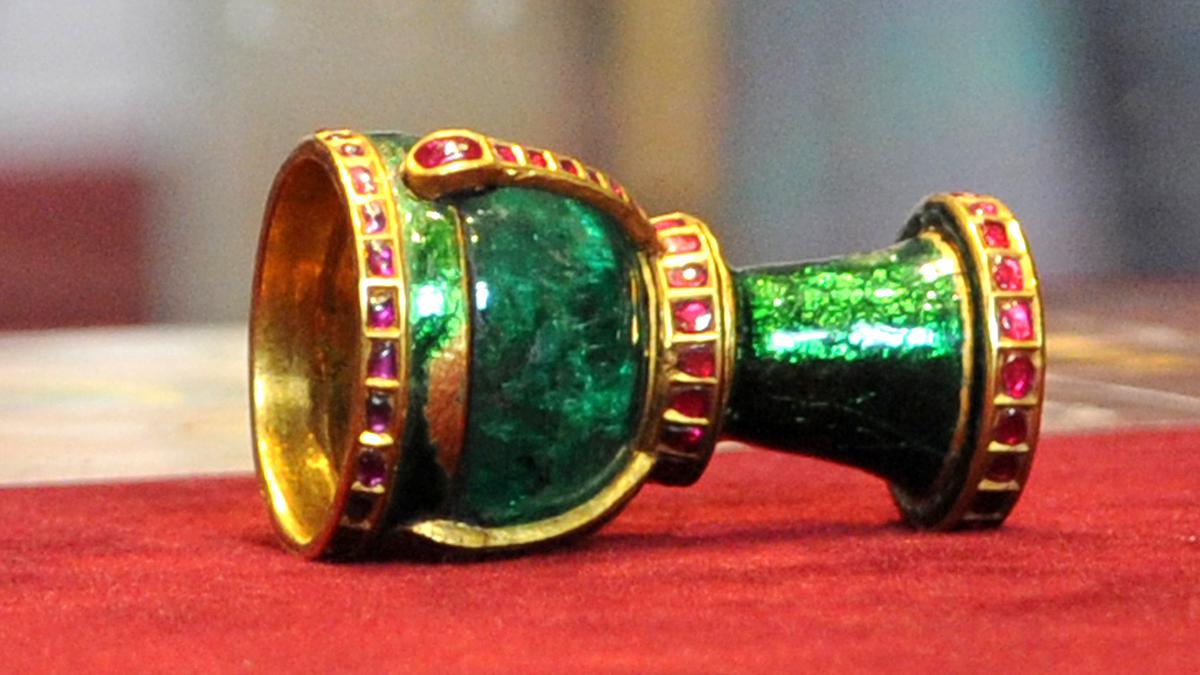
A 1628 emerald wine cup lined with gold and studded with rubies, from which Mughal emperor Shahjahan drank, now sits in Kolkata’s Indian Museum. The priceless bejeweled cup has a story that not many know of. For some, even its existence comes as a surprise. Similarly, how many of us know that the famed Cartier diamond necklace that made an appearance in the Hollywood film, Oceans 8, is a replica of the necklace that once belonged to the Maharaja of Nawanagar? Unfortunately, where it is now is a question still up for conjecture. A recent talk by art historian and director of Eka Archiving Services, Deepthi Sasidharan, on iconic jewels and bejeweled items of Indian museums at Apparao Gallery, put the spotlight on some fascinating, lesser-known history of jewelry set in the Indian context.
As a nation, we seem to be familiar with what is displayed in Western museums while being oblivious to some of the priceless objects back home. Deepthi says that some of these items, though rare and priceless, are not exactly available as photographs in the public realm. She starts with a tabernacle cover and a processional banner, both currently at the Museum of Christian Art in Goa. “Religion across the world, in terms of its outward-facing interfaces, was always about pomp and show. There were always professional standards, staff, statues, and jeweled objects — we like to put our faith and the best of what we believe in, in our wealth as well,” says Deepthi.
When Catholic Christianity came to Goa, 500 years ago, at the interface of the collision was Christian art and iconography which followed Indian jewel techniques. “The new religion was trying to use local artisans to tell a story. Local artisans showed their expertise by using techniques they were already familiar with.” Textile techniques that use gold, silver, and ivory threads were used to bring about a jewel-like quality. “It’s a specialty of Indian handicrafts and arts that you can switch between textiles, jewels, and natural objects and never really realize it,” she adds. A Catholic-style coral rosary uses the enameling technique that Goan artisans were known for, with blue bits that signify the Christian iconography of grapes. A jeweled amulet ( gau) that opens a prayer (in paper, leather, or parchment) at the National Museum, New Delhi, is another example of the concept of carrying something ‘holy or blessed’ that transcends many religions.
“At the Amarapali Museum [in Jaipur], there’s a classic 20th Century necklace that shows the best use of gold and silver by the Indian artisan andjewelerr. It’s tactile; that is, it sits according to the shape of your neck. It has a blue enamel with diamonds.” The Zoroastrian principle of Huversta Hukhta Humata is inscribed in diamonds on the necklace, the meaning of which the owners did not know, until the museum was set up almost five years ago. A pair ofVishnue, believed to have been sourced from the Nepal-Himalayan foothill region — with the iconography of the Hindu god Vishnu riding atop Garuda, and celebratory beings in jade and nephrite that take the shape of the earrings — is another interesting piece on display at the National Museum, Delhi. It was meant to be worn on the idol. “These are ideas and idioms that have been present in Indian art for many hundreds of years, translated in different mediums,” Deepthi says.
At the Hill Palace Museum in Kochi is the crown of the Kochi Maharaja which has 69 emeralds, 95 diamonds, and 244 rubies set in gold. “It was sold in 1964. And Chennai’s Messrs Murray and Sons were entrusted to sell it. Five hundred and eighty-four objects were sold and through the ‘60s and ‘70s several distress sales happened, especially for jeweled objects.”
Mumbai’s Chhatrapati Shivaji Maharaj Vastu Sangrahalaya (CSMVS) houses a raked (head ornament) made of gold and rubies, worn by the Mysore Vadayar family.
While some of these items come out of religion, or from royal collections, many bejeweled items were used for personal use and adornment and as arms and armor. A prime example is the famed Harappa necklace, one half of which is now in the National Museum, New Delhi, and the other in Lahore. Aurangzeb’s sword, which is now in a private collection, fondly referred to as the ‘diamond’, has a blade that is older than the hilt, the latter of which is inlaid with gold.
“Arms and armor, ceremonially and symbolically, were some of the most prized objects because when the King sat on his throne, he would hold the arms and armor. As real fighting wound down, its ceremonial value increased,” says Deepthi.










